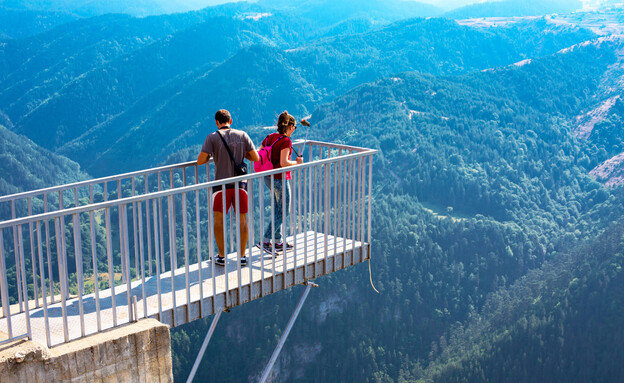The Pyrenees and the Rila Mountains
The Pyrenees was declared a UNESCO World Heritage Site in 1983 and is a natural park covering an area of
About 403 square kilometers. Admission to the nature reserve is free, and you can plan short walks or long treks, picnic stops near flooded streams, stunning vegetation and lots of special corners. You can go hiking alone or with a local guide, go on a jeep tour that will take you to some impressive points within the reserve. As part of the hike in the Pyrenees, you will reach the ancient pine tree which is 1300 years old. There are stairs that go up to it, not accessible, but arranged for a leisurely ascent, climb leisurely, and upstairs you can admire the spectacular tree and of course some selfies, because we have come this far anyway.
The Rila Mountains reach a height of about 2924 meters, at a height similar to Olympus in Greece. Perhaps the two best-known landmarks in the Rila Mountains are: the special “Rila Monastery” and the beautiful “Seven Lakes” trek, which must be prepared for in advance according to the season. It is worth consulting a local guide, or planning the route well in advance. In any case, the Rila Mountains serve as a good starting point for many hiking trails between alpine landscapes, lakes and intoxicating beauty.

Bansko Old Town
For those who come during the winter for a ski holiday, or in the rest of the seasons for hiking, do not miss the old town of Bansko. Not a big area but especially beautiful, with interesting stories, history and culture, good restaurants with local cuisine and lots of atmosphere. You can combine a hike in the mountains, and then a culinary extension in one of the restaurants. Recommend staying in either the old town itself, or one of the hotels in Bansko (the selection is huge).
Rhodope Mountain Reserve
Yagodinska Canyon and Stalactite Cave Yagodinska
The road to the Stalactite Cave passes through a narrow canyon (a canyon created by nature) that is about 7 km long, this is one of the most beautiful roads I have traveled. The mountains rise to great heights, the trees stand in the fall and the river flows vigorously along the road. Note that the road is relatively narrow and you have to drive very carefully, currently there are no regulated points for stopping, so stop at the side of the road carefully in favor of photos and admiration of the power of this place. Care must be taken with children, as it is difficult to hear the vehicles coming due to the strong water flow. Take care of safety and enjoy the wonders of nature. While shedding, we enjoyed piles of fallen leaves, insane colors, coolness along with caressing sun rays.
After the trip to the Jagodina Canyon, you will reach the Jagodinska Stalactite Cave, one of the two most famous caves in the area which was only discovered in 1963 (the other is called the Devil’s Throat or Devil’s Muzzle). The cave has to buy tickets at the entrance and go on a tour in Bulgarian. If you have a local guide, you can enjoy an explanation in English or Hebrew. In my opinion, the explanations are very interesting and there is almost no information inside the cave, and even if there is then it is in Bulgarian and therefore highly recommends coordinating instruction in a language relevant to you.
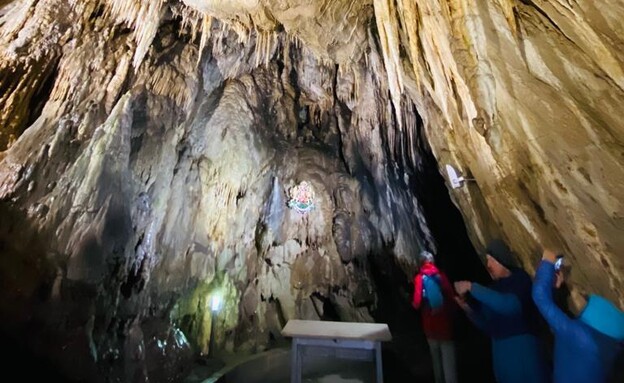

Stalactite Cave and Christmas Tree | Photo: Alon Kashi
In the cave special stalactites were formed, in shapes I have not seen elsewhere, including an unusual geological phenomenon, manifested by holes in the rock that look like tiger swamps and that is what they are called. In the center of the Stalactite Cave, there is even a spot where a Christmas tree is lit and weddings are held. The locals say that there were about 400 weddings in the cave and no couple divorced and they all live in happiness and wealth, so think about it next time, maximum for the silver wedding. Do not say that there are no particularly equal tips here.
The walking route is 1,200 km (out of about 10 km total length of the cave, which is not open to the public), a comfortable walk with several small steps.
Eagle Eye Observation (orlovo oko)
It is important to emphasize that it is not possible to reach the Eagle Eye observation site without a local jeep. You can arrange in advance, or reach the road that goes up towards the lookout and there are waiting for local jeeps that will be happy to take you (for a fee of course). The jeep is open and of course active only in the relevant season, not in winter when everything is snowy. The seating is in the open back so it is important that you have warm clothes. In my opinion, it is less suitable for those who suffer from severe back problems or shaking in the jeep.
The ascent is on a bumpy but beautiful dirt road, and most of all, a spectacular view from above awaits you – the eye of the eagle.
Note, especially with small children, the walk to the lookout is mostly steep and very close to the cliff, walk carefully and patiently. At the point itself, there is a small bridge that will lead you to a floating lookout like a bird (not for those who are afraid of heights, unless you want to try slowly and carefully).
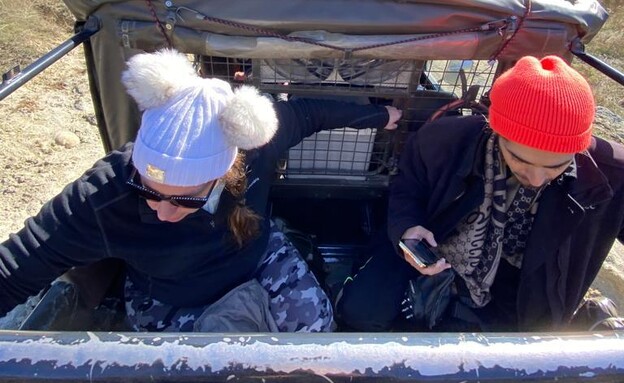
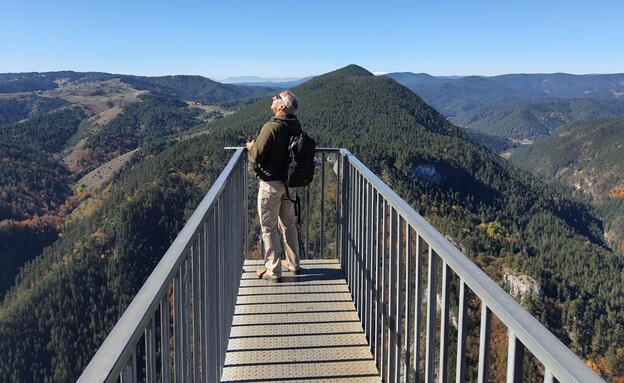
There is something very powerful about standing at the farthest point on the bridge, and if you can overcome the fear, I really recommend it. From here, you can return in the jeep that brought you, and if you have a sporty and challenging wind, you can walk down a steep dirt path, to a small hotel located at the end of the slope. Walking exposed to the sun and not easy, suitable for hikers. At the hotel itself you can drink coffee, have a light meal and buy the most perfect herbal tea (blend of rhodope plants).
The charming village of Shiroka laka
After walking and seeing landscapes, it’s time to jump in time for a medieval fairy tale, or earlier periods. A relatively small authentic village, in normal periods (not in Corona) also quite touristy, walking in it is back in time and admiring every window, sidewalk, flower pot. You will also find small B & Bs adjacent to the village houses, these are small rooms to consider, but the atmosphere is special.
Interesting historical information: In this village was born the pastor Stefan (stefan) who saved Jews during the Holocaust and became a Righteous Among the Nations (there is a monument in his memory).
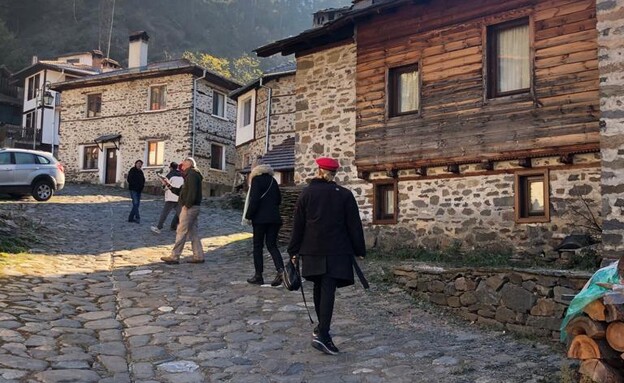

Borovets Ski Resort
The beauty of this site, which you can reach every season, as you can get out of it to the abundance of hiking trails, lakes, biking trails and more. After the snow melts in spring and summer, everything is beautiful and green and you can enjoy great hotels and varied hiking trails, while at the end of the day there is a center with restaurants, convenience stores, pampering hotels and information for trips and attractions.
Rural markets in the mountains
You will reach small and authentic villages in the mountains, where markets with local agricultural produce are held, the markets are usually held on Saturdays, but not only. In the market you will find, vegetables of various kinds, berries, apples, flowers, jams and honey, spices and more. Near many of the houses you will notice vine sukkot, because many of the residents produce wine and raccoon for self-consumption.

* The reporter was a guest of the Bulgarian Tourist Board
